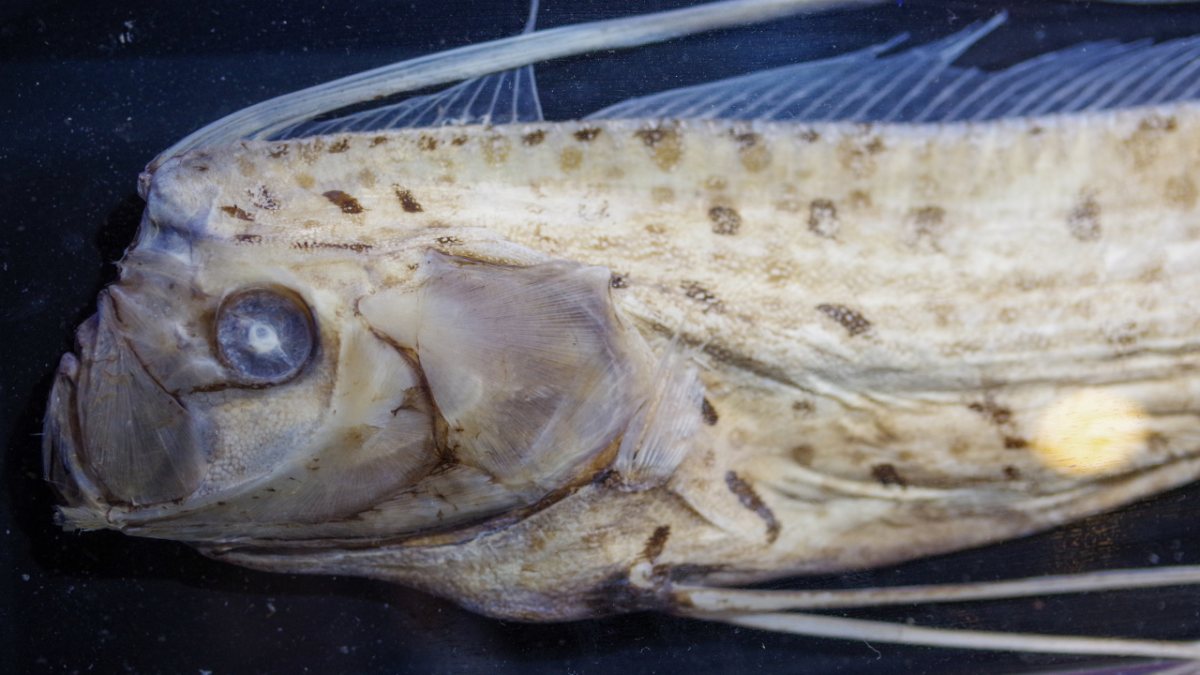Show table of content Hide table of content
The recent discovery of a rare deep-sea fish off California’s coast has revived ancient beliefs about natural disaster predictions. On August 10, 2024, marine explorers near San Diego encountered a massive oarfish, triggering discussions about these creatures’ mythological connections to earthquakes. Just two days after this finding, Los Angeles experienced a 4.4 magnitude tremor, adding fuel to centuries-old superstitions about these elusive marine creatures.
The mysterious oarfish and its earthquake connection
Marine biologists from the Scripps Institution of Oceanography documented an extraordinary find on August 10, 2024: a deceased oarfish measuring over ten feet long, discovered by divers exploring La Jolla Cove near San Diego. This ribbon-shaped denizen of the deep, scientifically known as Regalecus glesne, rarely appears in shallow waters, making each sighting noteworthy for researchers.
This particular species has earned the ominous nickname “Doomsday Fish” due to folkloric associations with natural calamities. The Ocean Conservancy notes that throughout history, these fish have been considered harbingers of impending disasters. Japanese culture refers to the oarfish as “ryugu no tsukai” – messenger from the sea dragon’s palace – believing their appearance warns of approaching earthquakes.
News This TikToker buys a used van and realizes it has a hidden surveillance device.
What makes this recent discovery particularly intriguing is the timing. Just 48 hours after documenting the oarfish, a significant earthquake rattled Los Angeles on August 12, 2024. This temporal connection has rekindled interest in the possible relationship between these nightmare-like fish creatures and seismic activity.
Scientists at the National Oceanic and Atmospheric Administration (NOAA) have transported the specimen to their research facility for comprehensive examination. Researchers hope the autopsy might reveal why this deep-water resident ventured into shallow waters before its death, potentially providing insights into oceanic conditions preceding earthquakes.
Scientific perspectives on the earthquake prediction theory
The scientific community remains divided on whether oarfish appearances truly correlate with seismic events. Professor Rachel Grant, an animal biology expert from Anglia Ruskin University in Cambridge, suggests a theoretical mechanism might exist. She proposed in a 2017 EuroNews interview that pre-earthquake pressure buildups in rock formations could release electrically charged ions into surrounding waters.
These electrical changes might disrupt the habitats of deep-sea creatures like oarfish, potentially driving them toward surface waters. Similar phenomena have been documented with other animals exhibiting unusual behavior before earthquakes, though establishing definitive patterns has proven challenging.
However, Ecuador’s Geophysical Institute maintains that no scientific evidence conclusively links oarfish sightings to earthquake predictions. Despite numerous studies conducted through August 2022, researchers have yet to establish a statistically significant correlation between these unusual fish appearances and subsequent seismic activity.
This scientific uncertainty exists alongside geological developments that reshape our understanding of tectonic activity worldwide. While ancient wisdom suggests animal behavior might offer early warnings, modern seismology relies on instrumentation rather than biological indicators to monitor earthquake risks.
Remarkable features of the enigmatic oarfish
The oarfish’s distinctive appearance contributes to its mythological status. With a serpentine body that can reach extraordinary lengths, Regalecus glesne holds the record as the longest bony fish species. According to Aquaportail, these remarkable creatures can grow up to 36 feet long, though most specimens measure considerably less.
Their ribbon-like bodies enable them to move with minimal resistance through deep ocean waters, where they typically reside at depths between 200 and 1,000 meters. These fish feature striking red dorsal spines forming a crown-like crest, contributing to their otherworldly appearance. Their diet consists primarily of krill, plankton, and small crustaceans, filtering these tiny organisms from the water column.
News Bat wings after 50? Here’s the most effective exercise, according to a coach.
Oarfish adaptations represent remarkable evolutionary developments, similar to how isolated species develop unique traits over millennia. Their specialized physiology allows them to withstand the immense pressure of deep-sea environments, making their occasional surface appearances all the more unusual.
The rarity of oarfish sightings contributes significantly to their mythological status. Most humans encounter these creatures only when they wash ashore, already deceased. This limited interaction has allowed ancient legends about their predictive powers to persist into the modern era, despite scientific skepticism.
California’s seismic history and the “Big One” concerns
California’s long relationship with earthquakes provides context for ongoing fears about major seismic events. The San Andreas Fault, running approximately 800 miles through California, represents the boundary between the Pacific and North American tectonic plates. Seismologists have long warned about the potential for a catastrophic earthquake known as “The Big One” along this fault line.
Historical precedent supports these concerns. On July 5, 2019, southern California experienced a 7.2 magnitude earthquake, one of the most powerful since the 1999 tremor that affected the Twentynine Palms Marine base east of Los Angeles. Earlier, on June 28, 1992, a 7.3 magnitude quake struck Yucca Valley, claiming one life and injuring over 350 people.
Another significant event occurred on April 25, 1992, when a 7.2 magnitude earthquake centered near Eureka in northern California injured 95 people and caused extensive damage across Humboldt County. These historical events demonstrate California’s vulnerability to major seismic activity, explaining why residents might look to ancient knowledge preserved through time for prediction methods.
Modern seismic monitoring technologies have dramatically improved earthquake detection capabilities, yet predicting precisely when and where earthquakes will strike remains elusive. This technological limitation explains why some communities maintain interest in traditional warning signs, including unusual animal behaviors or rare species sightings.
As California continues developing innovative environmental technologies, understanding these natural phenomena becomes increasingly important for public safety and infrastructure planning. Whether or not the oarfish truly predicts earthquakes, its appearance reminds us of nature’s unpredictable power and the ancient human desire to anticipate natural disasters.


